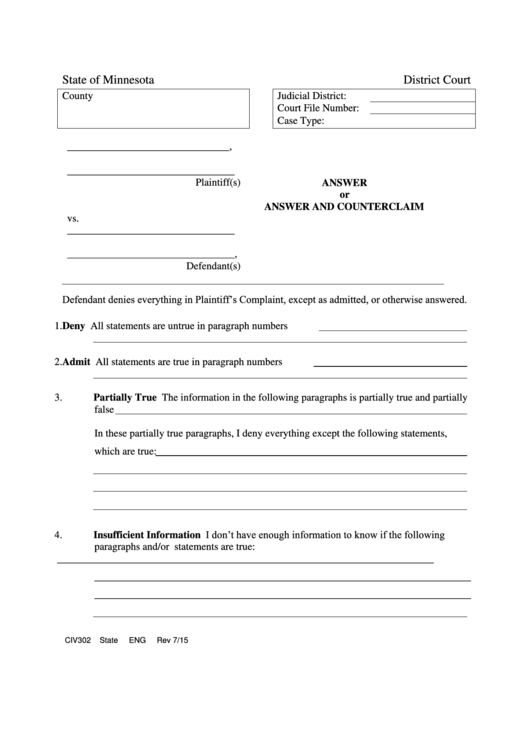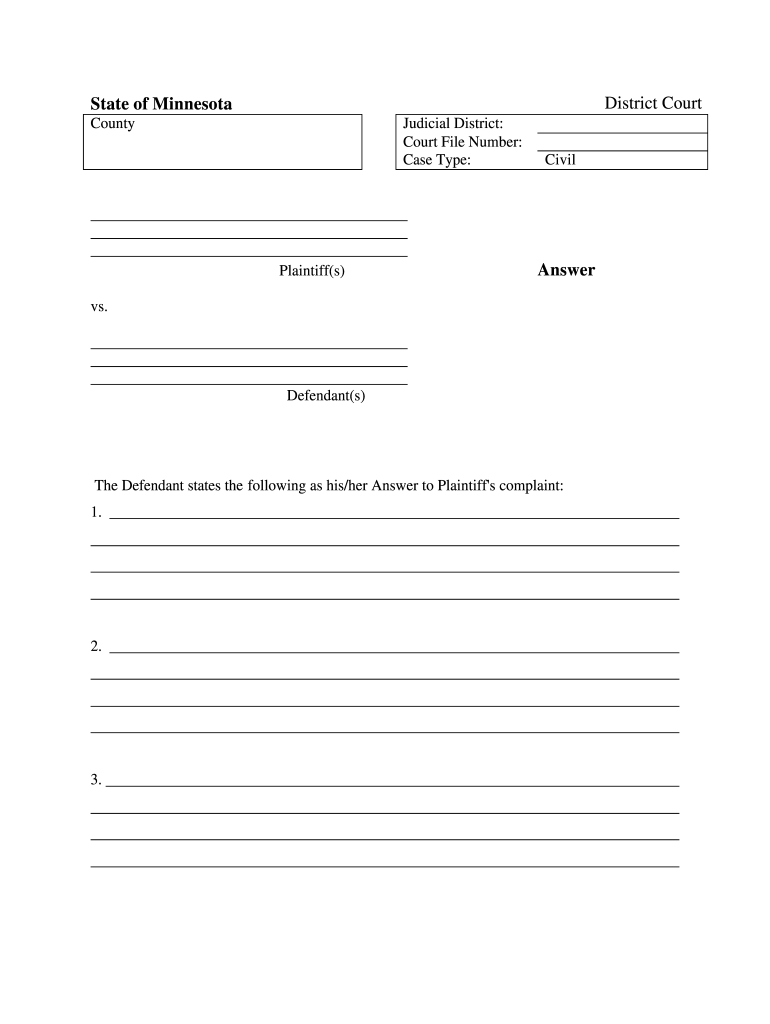Mn Courts Forms Civil Answer – If you’ve been commissioned to represent a civil litigant, there may be a series of forms that you must fill out. There may be forms that can be printed or downloaded from the court’s website. Or you might need to complete them in a format that is printed. There are additional online forms available. But you should make sure they’re appropriate for your specific situation prior to using any of them.
Fill in the blanks on this form
The Supreme Court Administrative Office (SCAO), which is the Supreme Court’s administrative unit, has a large stock of unfilled court forms. These forms are arranged in accordance with the nature of the legal issue. These forms can be accessed by entering their numbers or names.
If you’re looking for a form to suit your particular situation it is the first step in creating a legal document. On certain forms, the cases titles and names of two parties are separated with spaces.
Before you begin filling out forms, make sure you have read and comprehend the directions. You could be required to sign in certain instances as well as need to indicate how the documents were served. Make sure you keep only single-sided copies. If you don’t do this in the future, you don’t require duplicates again.
Request restricted status for electronic document
It isn’t easy to get a restricted status for an electronic civil court form. The factors to consider are legitimacy as well as whether the formatting requirements have been fulfilled. You should always ensure you’re following the Minnesota Supreme Court regulations.
In order to file electronically the document should be readable and include an official stamp. The document must be submitted to the county clerk in an envelope properly addressed. If the document is not in order, it will be checked to verify its authenticity.
EFCIV23 forms are required in order to inform the those who submitted your electronic submission that it is now converted. In exceptional circumstances, you must also serve this form with your commencement paperwork.Additionally, you must use EDDS to submit the paperwork to the court.
Print physical copies of your exhibits.
In some countries, you might be required to submit exhibits in physical copies to the court. However, your documents will generally be presented online. This means that when a paper document of your electronic filings is required to be used in court you have to give it to the judge.
You are required to fill out all court forms to the best of your abilities. Each of the fields on the forms must be filled in thoroughly and precisely. There’s often plenty of blank space within the forms’ shapes. If you are unsure about the format of a document, it’s a good idea talk to an attorney.
Hard copy exhibits should be provided to all parties along with the appropriate document, for example, the Notice of Hard Copy Exhibit File. It is possible to use a web-based solution like Odyssey File and Serve or the EDDS mail system for serving.
The online form may not work for your particular circumstance.
If you wish to use online court forms, it is necessary to first speak with an attorney. You’ll learn about your rights and options as a result. On the other hand, you’re the sole decision maker for your legal activities when you decide not to engage legal counsel. You could be liable to disciplinary actions or civil fines, including those for practicing law without an authorization.
Some courts provide self-help resources via their websites. Some do not. The Alaska Court System has developed specific forms, like. One of them is the complaint form, which can be found here. A different kind of form is available online complaint forms.
Once you’ve completed your form, print it out and mail it to the court which will hear it. Other forms may be available on the court’s website. Some forms, however, require computer software. Computer programs are created to answer questions, collect data, and produce forms.


